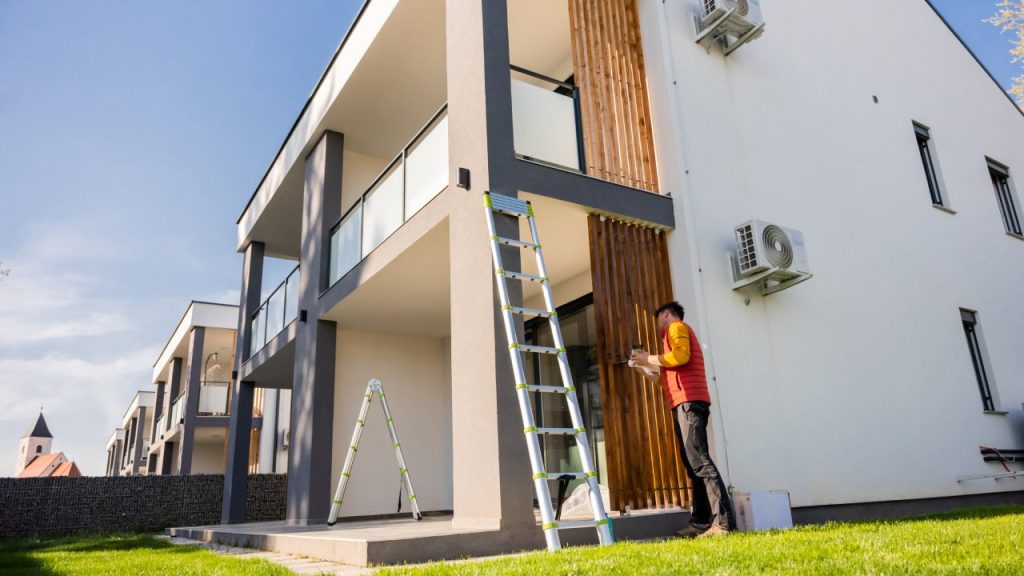Key takeaways
- A home equity line of credit (HELOC) on an investment property is a loan taken out against a piece of real estate that generates income or a financial return.
- Lenders will consider both the borrower’s creditworthiness and the property’s financials when evaluating an investment property HELOC application.
- These types of HELOCs are not as common or easily obtained as primary residence HELOCs.
- Since they’re considered riskier, investment property HELOCs’ interest rates and fees are typically higher.
Can you get a HELOC on an investment property?
Yes, you can get a home equity line of credit (HELOC) on an investment property: that is, one that lets you borrow against a piece of real estate that you use to earn income or a financial return. HELOCs on investment properties aren’t nearly as common — or as easy to ge — as regular HELOCs on residences. However, some lenders do offer HELOCs on investment properties. Here’s how they work, and how to decide if they’re a good strategy for your financing needs.
How do you get a HELOC on an investment property?
Getting a HELOC on a rental or other type of investment property is similar to getting a mortgage (in fact, HELOCs are a type of second mortgage). And opening a HELOC on an investment property is not that different from opening a HELOC on your home. In both cases, you’re putting up the property as collateral for your debt.
Here’s how the process works.
1. Know your finances
Before you apply for a home equity line of credit, you’re going to want to estimate how much equity you have. Property values have continued rising this year – albeit more slowly than they had been during the peak of the pandemic – so you’ll want to get a sense of what your property is worth versus how much, if any, you have left to pay on the first mortgage. The difference between how much you owe and the investment property’s fair market value equals, roughly, the amount of your equity stake.
2. Shop around for the best investment property HELOC
Shopping around for a HELOC on an investment property is going to be more limited than for the regular, residence-based variety: While the numbers are growing, there simply aren’t as many lenders that offer these lines of credit. Still, there are always choices, and it’s always important to compare. Try to find at least three lenders, and try to suss out how practiced they are in this sort of HELOC. Look at the APR that each lender offers, and be sure to scrutinize the fine print to understand whether there are additional fees such as a penalty for closing the line of credit early.
3. Apply
When you’re ready to officially apply for a HELOC, be prepared for the kind of complete under-the-hood type of financial scrutiny you would receive with any type of request to borrow a sizable chunk of money. A lender will look at your credit score, your debt load, your cash flow, your cash reserves and every other detail about your finances to determine a) whether they will loan you the cash and b) how much they’ll charge you to borrow it. The lender will also probably do an appraisal of your property — its condition and also the amount and sort of income it generates — which sets the official value on it.
4. Close
Closing on a HELOC is typically a much faster process than closing on a traditional mortgage. Some lenders – particularly the online institutions — promise to process your application in as little as three days, and (assuming approval) you can access the cash within a week. However, the timeline varies based on the lender and your particular circumstances. In some cases, closing could take as long as a month to six weeks.
HELOC requirements: investment properties vs. primary residences
The vast majority of HELOCs are taken out against primary residences; lenders are more comfortable with a loan against the actual roof over your head because they know you’ll prioritize repaying that loan. As a result, the criteria for investment property HELOCs tend to be more stringent than those on residences. In addition to the borrower’s creditworthiness, lenders also look at the property’s financials.
HELOC criteria |
Investment properties |
Primary residences |
|---|---|---|
| Credit score minimum | 700-720 | 650-680 |
| Debt-to-income (DTI) maximum | 50% (can depend on anticipated rental income) | 43% |
| Loan-to-value (LTV) maximum | 75-80% | 85-90% |
| Appraisal | In-person appraisal; more than one may be needed to validate the property’s value | Can be an in-person or desktop/virtual appraisal |
| Cash reserves | Must cover at least six months’ worth of payments | Lenders may not require |
| Minimum equity stake | 20% of property | 15% of property |
What are the pros and cons of getting a HELOC on an investment property?
Pros
- Cheaper than many other forms of borrowing: The interest rates on HELOCs are often lower compared to other forms of financing like credit cards and personal loans. (You’ll likely pay a bit more because the loan’s tied to an investment property, however — more on that below.) A HELOC might also be simpler and cheaper to obtain than a business or commercial property loan.
- Less risk for you: Taking out a HELOC on an investment property might feel a bit safer than a HELOC on your primary residence. If you default on the line of credit, at least the home you live in won’t be subject to foreclosure.
- A flexible way to access cash: You can continually tap the HELOC during the initial draw period, so it’s often a good fit for fluctuating or longer-term expenses like renovation projects.
- Cheap initial payments: With most HELOCs, you only need to pay interest during the draw period. Paying back the principal starts during the repayment period.
Cons
- Limited availability: Not many lenders offer HELOCs on investment properties.
- Higher rates: An investment property is inherently riskier than a primary residence: You don’t live in it, which means you aren’t as impacted if you lose it. That means that lenders charge higher rates for any type of financing attached to one, including a HELOC. For example, TD Bank’s lowest available APR on HELOCs for investment properties is currently 2 percentage points higher than a HELOC on a primary or secondary home.
- Extra fees: Most HELOCs come with an annual fee and an early cancellation or termination fee if you close the line within the first two or three years.
- Negative equity concerns: Real estate doesn’t always appreciate, and if your property loses value, you could wind up underwater (owing more on a property than it’s worth).
When is it a good idea to use a HELOC on an investment property?
Using a HELOC on an investment property can be an easy way to access cash that will generate a return. For example, you might use the funds from the HELOC to buy another property that can act as an additional investment, without depleting your savings. Or you might use the funds to upgrade or expand your property, making it more attractive to prospective tenants and enhancing its revenue stream. HELOCs are an especially good idea when you want to use the funds on the real estate itself — because there are tax benefits (see FAQ below).
What are the alternatives to using a HELOC on an investment property?
- Cash-out refinance: With a cash-out refinance, you’ll refinance the loan on your investment property to a higher amount — provided you have enough equity — and take the difference in cash. Some savvy real estate investors use this method to continuously add new properties to their portfolio mix. However, this strategy might not work as well today, with mortgage interest rates having gone up.
- HELOC on your home: If you can’t find a lender willing to extend a line of credit on your investment property, you might want to consider taking out a HELOC on your primary residence. This means your home is on the line, however, if you can’t repay what you borrow. You might not be able to get as sizable a loan, and if you use the funds on the investment property you won’t be able to deduct any interest (the tax break only works if the money is spent on the collateralized property).
- Personal loan: Depending on your debt load, you might be able to take out an unsecured personal loan as a lump sum. The interest rates on these can be much higher if your credit isn’t the best, however, and you’ll need to start repaying what you borrowed right away.
- Small business loan: If you have set up a company to own/operate your investment property, consider small business loans or lines of credit to access the funds you need. The interest rates on these loans will likely be higher than that of a personal HELOC, and you’ll have to start full repayments right away or make more frequent payments (in the case of the line of credit). But if you have a solid business plan you can show to a lender that documents your strategy for expanding your real estate investment portfolio, this can be another viable option.
FAQ on investment property HELOCs
Additional reporting by Mia Taylor
Why we ask for feedback
Your feedback helps us improve our content and services. It takes less than a minute to
complete.
Your responses are anonymous and will only be used for improving our website.
Help us improve our content
Read the full article here












